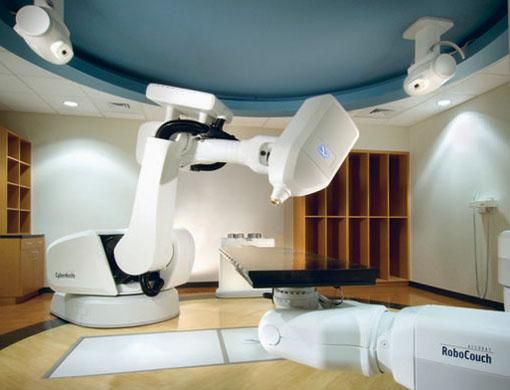Georgetown University Hospital in the US, along with Virginia Hospital Centre and others across the country, is now marketing a $4 million (Dh14.7 million) machine known as the CyberKnife for prostate cancer.
The trend has sparked an intense debate about whether it represents an important advancement or an example of a profitable technology.
While its advocates say CyberKnife offers prostate cancer patients a safe and effective alternative to radiation treatment, experts fear it could leave people vulnerable to recurrences or serious complications.
“It might be as good and more convenient. But it could turn out to be a disaster,'' said Anthony Zietman, president-elect of the American Society for Therapeutic Radiology and Oncology.
Proponents argue that enough evidence has accumulated to make them confident that the approach is at least as good as standard therapies and that it can prevent deaths by making treatment less daunting.
Just as safe
As CyberKnife can target tumours with higher doses of radiation, it could prove safer and more effective.
However, some critics worry that the push to expand the use of the CyberKnife may be motivated by financial incentives: The manufacturer wants to sell more machines; hospitals want to recover the cost of systems; and urologists can receive payment for each patient who opts for the therapy.
Prostate cancer strikes about 186,000 American men each year and kills more than 28,000.
The most common treatments are surgery or various forms of radiation, including radioactive “seeds'' that are implanted in the gland or “external beam'' radiation that subjects the tumour to low doses spread over about 40 15-minute sessions.
CyberKnife enables complete treatment in four or five sessions by delivering about four times the usual dose of radiation.
Doctors inject four tiny gold cylinders into the prostate to create a target.
The patient lies on his back for each one-hour session, as a robotic arm swivels around to shoot dozens of beams from various angles.
Omar Dawood of Accuray Inc, California, said more than 2,000 patients have been treated and the approach seems to work as well as standard treatments with the same or fewer side-effects.
While fewer high doses of radiation may work well, sceptics said the studies done so far have followed patients for too short a time.
But proponents suggest that the criticism is driven by doctors who are scared they will lose patients to a superior alternative.











